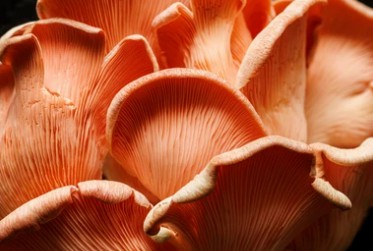Qualitative Analysis Food Polysaccharides by NMR
Polysaccharides are a class of compounds in complex heterogeneous systems that constitute food. Carbohydrates play a key role in determining the texture of food. Thickening, gelling, and general hydrocolloid action are recognized and widely used characteristics of polysaccharides in food development. Other useful functions of polysaccharides in food include dietary fiber, filler, encapsulant, foam and lotion stabilizer, protective colloid, emulsifier and suspending agent, adhesive and binder, flocculant, swelling agent, film-forming agent or dehydration shrinkage inhibitor.

Overview of Our Service
As an expert in the field of nuclear magnetic resonance, Creative Biostructure uses high-resolution one-dimensional and two-dimensional solution NMR to obtain detailed structural information about the composition, sequence distribution, substitution modes, and molecular weight of individual polysaccharides for customers.
At the same time, we will also apply other analytical techniques, such as fractionation, mass spectrometry, and chromatography, in conjunction with sample pretreatment and/or derivatization, to assist NMR testing in the execution of service experiments to obtain structural information about complex polysaccharides or mixtures.
Foods that contain the polysaccharide starch
- Potatoes.
- Bread.
- Cereals and cereal products (breakfast bars, etc.)
- Rice.
- Grains (oats, barley, bulgur)
- Pasta.
- Corn.
- Peas.
Achievable Goals
Various samples containing food polysaccharides can be tested.
Our qNMR can provide chemical properties independent of the analyte without using separation and does not require the derivatization of the sample prior to analysis.
We can determine the proportion of substances directly from the measured physical environment without reference to another substance.
Absolute Concentration Analysis of Food Polysaccharides
QNMR is based on the principle of a proportional relationship between the integrated signal area and the number of cores that generate the signal. The absolute concentration of an analyte in Creative Biostructures is determined by comparing the integral intensity of sample resonance with the intensity of a known concentration standard.
Signal-to-noise ratio and longitudinal (T1) relaxation rate are important parameters that need to be considered in our qNMR experiments.
Solution NMR Analysis Service
Our approach
1H and 13C NMR. For quantitative purposes, 1H NMR is our preferred method for analyzing samples at low concentrations (0.5% – 1.0% w/w) because of its relatively high sensitivity.
Test content
- Determine the content, polydispersity, and purity of polysaccharides (used as gelling agents, stabilizers, or tackifiers) in foods and raw materials.
- Absolute quantitative analysis of polysaccharides in the mixture.
- Average polymerization degree.
- Quantitative analysis of polysaccharides in complex matrices such as plant cell wall materials or foods (we typically use extensive extraction schemes or complete hydrolysis of monosaccharide constructs).
- Determination of the degree of acylation and methylation of polysaccharides in grain and plant cell walls (such as acylation and/or methyluronic acid).
Determination of the Base Number of Sugar Residues
We can determine the sugar residue base by the number of heteromeric hydrogen in 1H NMR and heteromeric carbon in 13C NMR.
Interpretation of experimental data
In 1H NMR, it is generally in the heteromeric hydrogen proton region δ 4.3-5.9 There are several signals indicating the composition of several monosaccharides, and the line width and integral of each signal are often used to distinguish the type of sugar unit and the relative content of each residue.
In addition, we will further determine the number of sugar residues by combining COCY and HMQC in the two-dimensional spectrum.
Determination of Other Structures of Polysaccharides in Foods
- Determination of sugar ring configuration.
- Determination of heterotopic configuration.
- Assignment of chemical shifts of monosaccharide residues H and C.
- Determination of connection position and sequence.
- Determination of substituents.
Creative Biostructure is committed to providing high-quality NMR analysis services to advance the life sciences fields. If you have any questions or needs, please contact us and our customer service staff will help you the first time.
Ordering Process

